|
The Flag 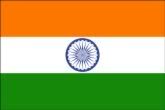 THE NATIONAL FLAG OF INDIA is in tricolour of deep saffron(Kesari) at the top, white in the middle and dark green at the bottom in equal propotions. The ratio of the width to the length of the flag is two is to three. In the centre of the white band, there is a wheel in navy blue to indicate the Dharma Chakra, the wheel of law in the Sarnath Lion Capital. Its diameter approximates the width of the white band and it has 24 spokes. The saffron stands for courage, sacrifice and the spirit of renunciation; the white, for purity and truth; the green for faith and fertility. The design of the National Flag was adopted by India's constituent assembly on 22nd july, 1947. It's use and display are regulated by a code. The Indian flag symbolizes freedom. The late Prime Minister Pandit Nehru called it a flag not only of freedom for ourselves, but a symbol of freedom for all people. Where on Earth is India, you may ask.. The subcontinent of India lies in south Asia, between Pakistan, China and Nepal. To the north it is bordered by the world's highest mountain chain, where foothill valleys cover the northern most of the country's 26 states. Further south, plateaus, tropical rain forests and sandy deserts are bordered by palm fringed beaches . 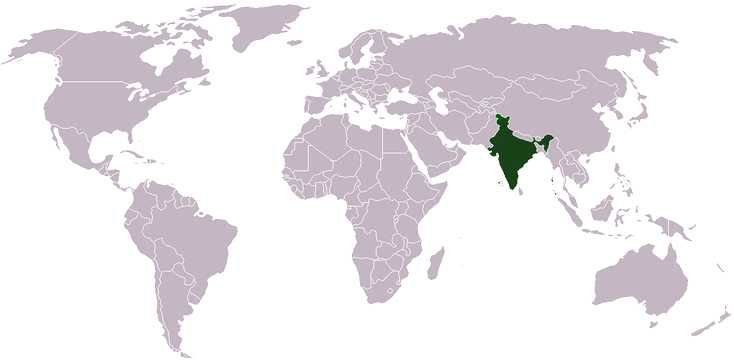 Side by side with the country's staggering topographical variations is its cultural diversity, the result of the coexistence of a number of religions as well as local tradition. Thus, the towering temples of South India, easily identifiable by their ornately sculptured surface, are associated with a great many crafts and performing arts of the region. In the desert of Kutch, Gujarat, on the other hand, a scattering of villages pit themselves against the forces of nature, resulting in Spartan lifestyles made vibrant by a profusion of jewelry and ornamental embroidery used to adorn apparel and household linen. In the extreme north is the high altitude desert of Ladakh. Local culture is visibly shaped by the faith - Buddhism -as well as by the harsh terrain. Yet another facet of Indian culture is observed in the colorful tribal lifestyles of the north eastern states of Nagaland, Mizoram, Tripura and Manipur with their folk culture. In the central Indian states of Orissa and Madhya Pradesh tribal village life has resulted in a variety of artistically executed handicrafts. India's mountains provide heli skiing, river running, mountaineering and trekking. Its beaches provide lazy sun-bathing as well as wind surfing and snorkeling, and its jungles provide shooting wildlife -with a camera. India's history goes back to 3,200 BC when Hinduism was first founded. Buddhism, Jainism, Sikhism. Judaism. Zoroashtrianism, Christianity and Islam all exist within the country today. As a consequence of India's size, the history of the country has seldom been the same for two adjoining territories, and its great natural wealth has lured a succession of traders and foreign influences to it, each having left their imprint in the country, however faint or localized. Thus, Chinese fishing nets in Kerala are a throwback to that country's ancient maritime trade, while in the north, terra-cotta figurines of the centuries BC bear distinctly Greek traces. Modern India is home alike to the tribal with his anachronistic lifestyle and to the sophisticated urban jetsetter. It is a land where temple elephants exist amicably with the microchip. Its ancient monuments are the backdrop for the world's largest democracy where atomic energy is generated and industrial development has brought the country within the world's top ten nations. Today, fishermen along the country's coastline fashion simple fishing boats in a centuries old tradition while, a few miles away. motor vehicles glide off conveyor belts in state-of-the-art factories. 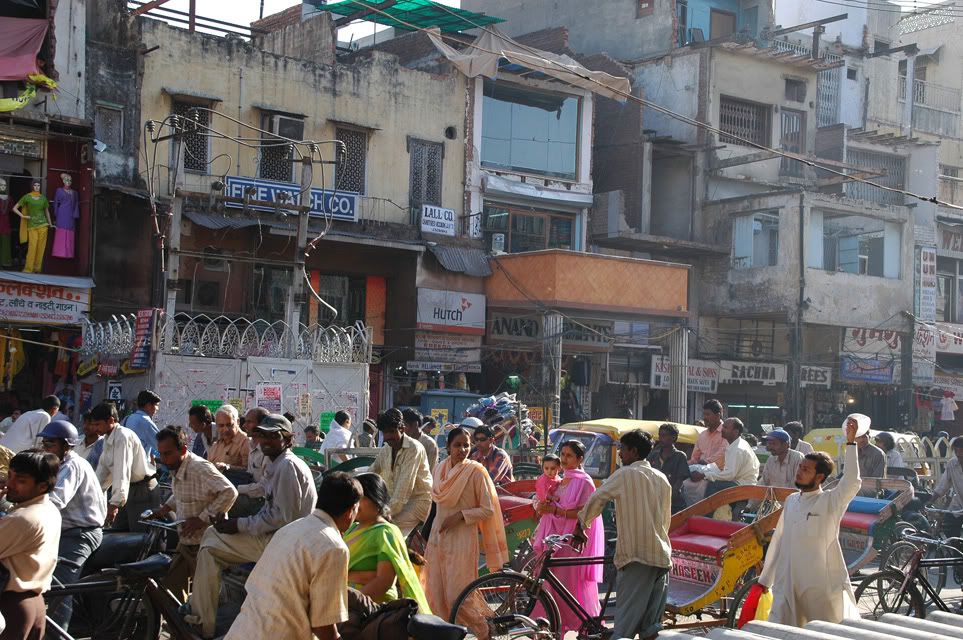 DEL Delhi - Chandni Chowk street shopping bazaar The Capital - Delhi Delhi, the capital of India is the third largest city of the world, exceeded in size by Calcutta and Mumbai. Delhi is situated in north central India and stands on the west bank of Yamuna river. It is bounded on the east by the state of Uttar Pardesh and on the north, west and south by Haryana. The eternal Yamuna has witnessed the glory and the tumultuous history of the 3000 year old Delhi. Delhi is spread over an area of 1483 sq. kilometers, 216 meters above sea level and has a population of around 14 million. The amalgamation of various cultures, traditions, religions has painted Delhi in colour which are brought from all over India. Delhi is a true cosmopolitan city always on the move. Delhi remains the centre of power. Once it was a city of royal power. Then it became the seat of colonial power. Later it was the seat of bureaucratic power. The seat of political power it has always been. Today it is emerging as an important centre for corporate power too. It is a perfect introduction to the cultural wealth, the complexities and dynamism of India. Delhi has always been the hub of activity, art, culture and the history of the whole country and continues to do so. The Major Cities Agra | Chandigarh | Jaipur | Ahmedabad | Chennai | Mumbai | Bangalore | Delhi | Pune | Kolkota | Hyderabad | Thiruvanathapuram Places of Interests Click Here to find out more about the many places/cities of interests in India. Religions Hinduism accounts for 80% of the population of India. The second largest religion is Islam, at about thirteen percent of the population. Stating the hospitality of Hinduism towards all other religions, John Hardon writes, "However, the most significant feature of current Hinduism is its creation of a non-Hindu State, in which all religions are equal; Other native Indian religions are Buddhism, Jainism, Sikhism. Ancient India had two philosophical streams of thought, the Shramana religions and the Vedic religion, parallel traditions that have existed side by side for thousands of years. Both Buddhism and Jainism are continuations of Shramana traditions, while modern Hinduism is a continuation of the Vedic tradition. These co-existing traditions have been mutually influential. About two percent of Indians adhere to Christianity. Zoroastrianism and Judaism also have an ancient history in India and each has several thousand Indian adherents. Religious Influences Although a number of religions exist in India, the two cultures that have influenced Indian cooking and food habits are the Hindu and the Muslim traditions. Each new wave of settlers brought with them their own culinary practices. However, over time they adopted a lot of specialties and cooking methods from the Indian cuisine and blended the two to perfection. The Portuguese, the Persians and the British made important contributions to the Indian culinary scene. It was the British who started the commercial cultivation of tea in India. The Hindu vegetarian tradition is widespread in India, although many Hindus eat meat now. The Muslim tradition is most evident in the cooking of meats. Mughlai food, kababs, rich Kormas (curries) and nargisi koftas (meatballs), the biryani (a layered rice and meat preparation), rogan josh, and preparations from the clay over or tandoor like tandoori rotis and tandoori chicken are all important contributions made by Muslim settlers in India. Languages Hindi : This language is the most used official language of many states in India like UP, Bihar, MP, Jharkhand, Uttaranchal, Rajasthan, Haryana, Chhattisgarh, Himachal Pradesh as well as in the National Capital Territory of Delhi. Marathi : This is official language of state Maharashtra. Punjabi : This is official language of state Punjab. Gujarati : This is official language of state Gujarat. Tamil : This is official language of states Tamil Nadu, Pondicherry as well as Andaman and Nicobar Islands. Malayalam : This is official language of states Kerala and Lakshadweep. Kannada : This is official language of state Karnataka. Telugu : This is official language of state Andhra Pradesh. Oriya : This is official language of state Orissa. English : This language is used co-officially in the Indian Union and many above mentioned states, but some may have different co-official language as well. Common phrases/sentences English Greetings Hindi Greetings: Hi! Namastey! नमस्ते Good morning! Suprabhaat सुप्रभात Good evening! Shubh sundhyaa. शुभ संध्या Welcome! (to greet someone) Aapka swaagat hai! आपका स्वागत हैं। How are you? Aap kaisey hain? आप कैसे हैं ? I'm fine, thanks! Mein theek hoon, shukriya! मैं ठीक हुँ । And you? Aur aap? और आप? Good/ So-So. Accha/ Theek-thaak अच्छा/ ठीक-ठाक Thank you (very much)! Shukriyaa (Bahut dhanyavaad) शुक्रीया (बहुत धन्यवाद) You're welcome! (for "thank you") *** *** Hey! Friend! Arrey, Dost!. अरे, दोस्त I missed you so much! Mujhey aapkee bahut yaad aaee.? मुझे आपकी बहुत याद आयी। What's new? Kyaa chal rahaa hai?; क्या चल रहा हैं? Nothing much Zyaada kuch nahi ज्यादा कुछ नहीं । Good night! Shubh raatri. शुभ रात्री। See you later! Phir milen-gay.! अलविदा। Good bye! Alvida! अलविदा। 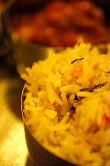 North Indian Food A typical North-Indian meal would consist of chapatis or rotis (unleavened bread baked on a griddle) or paranthas (unleavened bread fried on a griddle), rice and an assortment of accessories like dals, fried vegetables, curries, curd, chutney, and pickles. For dessert one could choose from the wide array of sweetmeats from Bengal like rasagulla, sandesh, rasamalai and gulab-jamuns. North Indian desserts are very similar in taste as they are derived from a milk pudding or rice base and are usually soaked in syrup. Kheer is a form of rice pudding, shahi tukra or bread pudding and kulfi, a nutty ice cream are other common northern desserts. 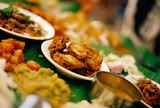 South Indian Food South Indian food is largely non-greasy, roasted and steamed. Rice is the staple diet and forms the basis of every meal. It is usually served with sambhar, rasam (a thin soup), dry and curried vegetables and a curd preparation called pachadi. Coconut is an important ingredient in all South Indian food. The South Indian dosa (rice pancakes), idli (steamed rice cakes) and vada, which is made of fermented rice and dal, are now popular throughout the country. The popular dishes from Kerala are appams (a rice pancake) and thick stews. Desserts from the south include the Mysore pak and the creamy payasam. Click Here to view Indian recipes and an Indian food glossary. Festivals Indian festivals speak of India's rich cultural and traditional background. The colorful festivals are an integral part of every Indians. The festivals play an important part in promoting the traditional handicrafts and tourism of India. The rich cultural heritage of India attracts the Western world during the celebration of important festivals like Onam, Holi, Durga Puja and many more. Every region celebrates their festival according to their regional customs and rituals. The commonness in all the celebration is that it celebrates humanity. Some of the common rituals, which are followed in most of the festivals, are processions in the streets, decoration of homes and sacred places such as temples and traditional and folk song and dance performances. Most religious festivals have elaborate prayers, traditions, customs and rituals attached to them. The elaborate celebration and the multitude of festivals in India, each with their own unique legends and significances often awe the foreigners who come to visit India. Pongal Pongal is regarded as a harvest festival of South India. It is one of the most important and popular Hindu festivals. The four-day long harvest festival of Tamil Nadu, Pongal is all about thanksgiving to nature and takes its name from the Tamil word meaning "to boil" and is held in the month of Thai (January-February) it is celebrated from January 13 to 16 every year. The festival marks a period of plenty, peace and happiness. While each of its days has a special religious significance, most urban people celebrate second day as the main festival. Pongal is the only festival of Hindu that follows a solar calendar. On the first day known as Bhogi, people clean out their homes thoroughly and in the evening, all unwanted goods are lit in a bonfire. The second day is Perum Pongal, the most important. It is also called Surya Pongal because people worship Surya, the Sun God and his consorts, Chaya and Samgnya. Women decorate the central courtyard of their homes with beautiful kolams, done with rice flour and bordered with red clay. The third day, Mattu Pongal, is meant to offer thanks to the cows and buffaloes, as they are used to plough the lands. Jallikattu, a violent taming the bull contest, marks this day. On the last day, Kanum Pongal, people go out to picnic. During the Pongal season, people eat sugar canes and decorate the houses with Kolam. 'Ponga' literally means overflowing and is named so because of the tradition of cooking the new rice in pots until they overflow, which is symbolic of abundance and prosperity. The festival of Pongal is mainly associated with the rural people. People wish each other on this day. Pongal wishes are exchanged between family and friends, and there are celebrations within the family. As one stand on the threshold of the harvest season, everyone exchange Pongal wishes, hoping that it brings the harbinger of good luck, good fortune and good cheer. The festival of Pongal is held dear particularly by the farming community as it marks the end of harvesting season. Holi The festival of colors is one of the most popular festivals of the country. It is celebrated during the Spring season and embodies all the festivity, liveliness and exuberance of the season. Holi is the festival of young hearts. Spraying colors, dancing to traditional Holi songs, rhythmic drum beats and wild processions are the common scenes that one comes across during this festival. The festival is associated with various legends but the most popular among them is the tale of Holika. According to legends there was a demon-king named Hiranyakashipu who was very cruel and ordered everybody to worship him and not God. He was against Lord Vishnu. However, his little son Prahlad refused to do so and continued to worship the almighty Lord Vishnu, the Hindu God. He tried hard to kill him but every time Lord Vishnu saved him. One of the sisters of the king named Holika had a boon to remain unscathed by fire, so she followed her brother's wishes. However, with this sinful act against Lord Narayana's devotee, Holika's boon ended and she was burnt to ashes, while Prahlad came out safe. From that day onwards Holi is celebrated as the festival of the victory of good over evil. Even today, bonfires are lit on the night before Holi in memory of the event and burning of the evil Holika. It symbolizes the victory of Good over evil. It is actually the great festival of Hindus, where farmers and rural people can celebrate the prosperity and abundance in life that comes with the harvest season. The festival of colors, Holi is celebrated on the day after the full moon in early March or April every year. People smear each other's faces with colored powder known as 'Gulal' and 'Abeer' and throw colored water or 'Rang' on each other. Most of the people nowadays prefer the traditionally prepared natural herbal colors that are not only fragrant but also good for skin. People take out processions on streets that feature folk songs and dances. The 'Bhaang' (opium) drinks are very popular among people as it the favorite festival drink. The festival of Holi has no religion as all celebrates it. The festival has a secular flavor. The main significance behind the celebration is fun and enjoyment. Rakhi The Rakhi festival or Raksha Bandhan has a special significance in hearts of brothers and sisters. The silken thread of Rakhi symbolizes the love between siblings. The Rakhi Festival symbolizes all aspects of protection of the good from evil forces. Rakhi is meant to sweeten the ties of brother and sister. Rakhi is celebrated with great joy and excitement all around India. Known as Raksha Bandhan in other parts of the country, Rakhi festival showcases the love, affection and feeling of brotherhood. Raksha Bandhan usually falls in late August. The main ritual consists of tying the 'Rakhi' knot on to a brother's wrist. 'Raksha Bandhan' literally means 'Bond of protection' and implies that while the sister prays to God for the well-being and prosperity of her brother, the brother vows to protect her against all the evils of the world and help her in all the problems. The day is all about Raksha or protection. The values, emotions and the sentiments attached to the customs of Rakhi festival are worth inculcating by the whole human race, the sentiments of harmony and peaceful coexistence. Rakhi is celebrated with great excitement and joy across India and other parts of the worlds where Indians reside. From early morning everybody starts getting ready for the occasion. On the day of Rakshabandhan, people generally prefer to wear traditional attires. Men mostly wear kurta pyjama on this occasion whereas women prefer to wear sari or salwar suits, which are mainly Indian traditional clothes. People generally prefer to wear cotton material cloths, as this is comfortable during this season. But with the changing fashion trends every year, people generally tend to follow the fashion of that season during the festival time. But for Indians, the traditional and cultural chord is so strong that no matter where the siblings are, they will try to wear traditional Indian clothes that reflect our values, tradition and culture. On the occasion of Rakhi, special dishes are prepared, which includes sweets and namkeens. The day has a deeper perspective in today's scenario. The rakhi tying ritual has become so much a part of the families that come what may brothers and sisters try to reach out to each other on this particular day bringing back the oneness of the family, binding the family together in an emotional bond. Diwali Diwali is regarded as one of the most important festival of the Hindu calendar. It is celebrated across the nation with great pomp and excitement. The festival is mainly associated with lights as it is called the festival of light. On the day of the festival diyas (small clay lamps) are lit in everybody's home irrespective of their social status. The name Diwali signifies 'rows of lighted lamps'. Diwali is a five-day festival, beginning on the 15th day of the Hindu calendar month of Kartika (Ashwin). By the Gregorian calendar, Diwali falls in October or November. Diwali marks the beginning of the Hindu and Gujarati New Year and is celebrated with the lighting of lamps and candles, and lots of fireworks. People decorate their home with beautiful diyas and making rangoli pattern in the courtyard and in front of the gate. They put flowers and mango leaves on their doors and windows. Diyas and candles are placed on rooftops, rooms, and kitchen and even in the bathrooms. On this day, people worship Lord Ganesha, the foremost of all Hindu Gods and Goddess Lakshmi, the Goddess of Wealth and Prosperity. It is also time to exchange gifts and sweets with friends, relatives and neighbors. Due to India's varied cultural diversity there are many manifestations of the Diwali festival. The festival begins with Dhanteras, a day set aside to worship the goddess of prosperity, Goddess Lakshmi. On this day, homes are cleaned and paintings are done. There are various legends associated with the celebration of Diwali. But people mostly associate the celebration with the legend of Lord Ram returning to his kingdom of Ayodhya after fourteen years of exile and defeating Ravana, the demon king. Joy and festivity reins every corner of the nation during the Diwali season. Diwali festival is the one Hindu festival that unites the whole of India. The exchange of sweets and the explosion of fireworks customarily accompany the celebration of the festival. Diwali is an occasion for cheerfulness and togetherness. This is that time of the year when people of all age and all class take part in its celebration. National Festivals Gandhi Jayanti Gandhi Jayanti celebrates the birth anniversary of Mahatma Gandhi popularly known as the Father of the Nation. Born on the 2nd of October 1869 at Porbandar in Gujarat. He is known for his invaluable contribution in India's freedom struggle. His principles of truth, non-violence and honesty are still remembered today. Mahatma Gandhi was an intensely active personality. He was interested in everything that concerns the individual or society. He is best known as the matchless political leader who evolved the new technique of "satyagraha". His fight against untouchability and the notions of superiority and inferiority by birth are also fairly well known. For India, his greatest service was, perhaps, the emancipation of Indian women. While his stay in South Africa in the earlier part of his life, he protested against the colonial and racial discrimination and the Asiatic (Black) Act and the Transvaal Immigration Act with the aid of a brilliant strategic move of starting a non-violent civil disobedience movement. He returned to India in 1915. Independence Day 15th August the red-letter day in the Indian calendar is celebrated as the Independence Day of India. The date commemorates the day when India achieved freedom from the British rule in the year 1947. It has been a long journey for India 1947. After more than two hundred years of British rule, India finally won backs its freedom on 15th August, 1947. In history this date has a special significance as it gave birth to a new nation and a new era. Independence Day was also the end of nearly a century of struggle for freedom, battles, betrayals and sacrifices. It gave us the freedom to choose between right and wrong also created a situation where we were responsible for ourselves. Independence Day is an occasion to rejoice in our freedom and to pay collective homage to all those people who sacrificed their lives to the cause. The day is marked with flag hosting and cultural programs in the state capital and the Prime Minister's speech at the Red Fort in Delhi is the major attraction of the day's celebration. The day is celebrated as a national holiday. Schools and people hoist the national flag through out the country and put them up on the rooftops and the buildings. It is a day of celebration across India and people of all age are in a holiday mood. All the government offices are closed on this day but they are lit up with tri color lights and flag hoisting ceremonies are performed in almost all the schools and colleges to mark the occasion. Roads are decorated with tricolor flags and lights to give a patriotic feel. Republic Day of India On 26th of January every year India celebrates its Republic Day. It is one of the national holidays of India and regarded as the most important day in the Indian history as it was on this day in 1950 the constitution of India came into force and India became a truly sovereign state. It is celebrated with much enthusiasm throughout the country to commemorate the event. In New Delhi, the celebrations start with the solemn reminder of the sacrifice of the martyrs. The patriotic fervor of the people on this day brings the whole country together even in her essential diversity. Every part of the country is represented in occasion, which makes the Republic Day the most popular of all the national holidays of India. The Colorful parades and drills are organized where children from various schools and institutions takes part. The parade and pageants are broadcasted on the National Television throughout the country. The most popular of all the national holidays of India, children love to see the air tricks performed by the practiced pilots that shower the tricolors of the Indian flag. The parade also includes the latest weapons of the Indian security forces instilling confidence in the people of the protection offered to them and inspires them with the patriotic feelings. The displays from all the states are meant to promote the feeling of familiarity, brotherhood and unity among the people of this vast country. Cultural functions are held in different parts of India to mark the occasion. In true sense sRepublic Day is the celebration of India's sovereignty and freedom.  The Infamous Red Dot Now, let's clear the misunderstanding that all Indians are Hindus. The fact is, although a vast majority of Indians are Hindus, there are also Christians, Muslims, Christians and people of other faith. The red dot goes by different names in different dialects. You'll most often hear it referred to as a "tilaka", "bottu", "kumkum" and "bindi". Traditionally, there is no gender limitation to the dot - both men and women wear it. However, the tradition of men's wearing the tilaka has faded in recent times, though, so nowadays you see a lot more women than men sporting one. Red is the traditional color of the dot, but this is now changing. people nowadays go with different colours depending upon their preferences. Traditonally, some unmarried women wore black dots, while married women sported red ones. The vermilion is traditionally used for married women. The red color of the vermilion represents shakti (strength) and also symbolizes love. Also, once the Husband has passed away, the Indian women will have to refrain herself from wearing the red bindi. Today, women often wear dots that match their saris. The position of the tilaka is standard - centre of the forehead. It represents a third, inner eye. Hindu tradition holds that all people have three eyes, two outer ones used for seeing the outside world, the third one focusing inward toward God. As such, the red dot signifies piety as well as serving as a constant reminder to keep God in the front of a believer's thoughts. You can visit this link to a discussion about the red dot - click here Clothes/Fashion Cottons and silks are the most widely used fabric in Indian clothing. One peculiarity of Indian clothing is that they require minimum of stitching and buttoning. Man 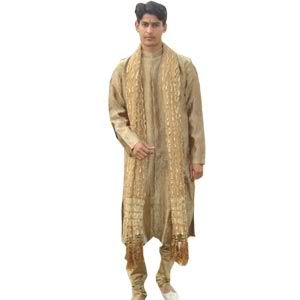 North Indian men generally wear kurtas over loose pajamas or dhotis (9 yards of cotton draped around the waist, with one end taken through the legs and knotted in the back). In the South, men prefer simple shirts over loongi (the knot-less version of the dhoti). However this aspect is not very important. What is most important is the color. Almost always it is white or cream - remember the correlation between color and heat conduction from your physics class? The task of adding a dash of color is assigned to the turban. Considered as symbols of honor, turbans provide effective protection from the scorching sun and are worn everywhere in India - only the shape and method of tying differs. Unfolded, it is used as bed sheet or a pillow to laze under a tree, or even as a rope to draw water from the wells while traveling. To the practiced eye, the color and size of the headgear reveals the wearer's caste, religion, region and socio-economic status. In some places in the South and Northeast, a cloth is put on the shoulders or wrapped around the waist instead. However, its significance is the same as that of the turban. For special ceremonies, silks, zari and embroidery come into the picture. Jodhpuris, sherwanis, achkans, churidars and jackets are an integral part of the wardrobe. 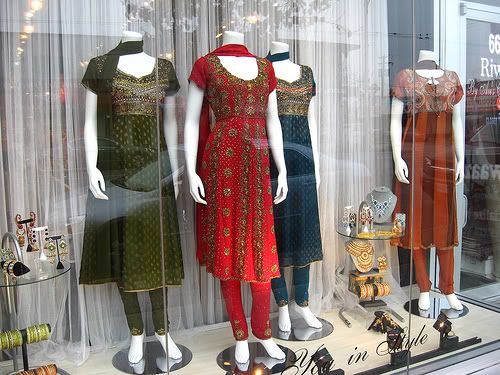 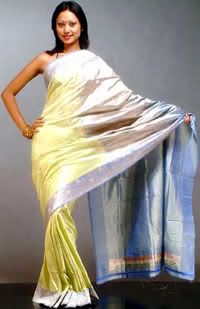 Women Nothing symbolizes India more than its unique SARI. It does not need to be purchased on the basis of size or cut as it is just a 6 yards long rectangular piece of cloth. Saris come in a mind-boggling range of infinite colors - plain cotton, printed, dyed, silks, embroidered, gold and silver threadwork, zari etc. etc. The most amazing and difficult part is the method of wearing it. It is draped in different styles in different parts of the country. From very simple patterns in the East, saris become brilliantly colorful in the West and strikingly rich in the South. Whatever the style, one thing's for sure - it's always very graceful. For women, India is an ethnic treasure trove. Beautiful attires like odhnis, lehengas, salwar-kameezes, shararas and skirts come in an unimaginable spectrum. Kamasutra Kamashastra science of sex, which deals with the sexual relationship between man and woman and discusses the ways of making sexual life enjoyable. It also classifies human beings according to their sexual indicators and describes those classes of men and women who are compatible and can have happy sexual relationships. According to Hinduism, religion, earthly possessions, sex and salvation of the soul are of equal importance. The absence of any one of these principal pursuits of life will make human life incomplete. If sex is ignored, human society will disappear. This is why the art of sex, like the other three pursuits, is regarded in the Hindu scriptures as both sacred and important. The first discourse on the subject is found in Vrhadaranyaka Upanisad. Many writers, including Bengalis, wrote discourses on the subject up to the 17th century. The most important book on the subject is Kamasutra (c 3rd century BC) by Vatsyayana. Kamashastra has also influenced both Sanskrit and Bangla literature. Its influence may also be seen on the Bengali poet Baru Chandidas in Shrikrsnakirtan in his Mahabharata. Its use is also noticeable in several Sanskrit satires by Bengali writers, among them, Gopinath Chakrabarti's Kautukasarvasvam (16th-18th century) and Kavitarkik's Kautukaratnakaram (17th century). Women In Indian Society Of the several factors that justify the greatness of India's ancient culture, one of the greatest is the honoured place ascribed to women. However, the Muslim influence on India caused considerable deterioration in the status of women. During the Muslim period of history, they were deprived of their rights of equality with men. They were compelled to keep themselves within the four walls of their houses with a long veil on their faces. Even today in some Islamic countries women are not allowed to go out freely. The conservative regimes of Iran and Pakistan, for example, have withdrawn the liberties given to women folk by the previous liberal governments. The sight of Muslim women walking with long 'Burkas' (veils) on their person is not very rare. The women were, as a matter of fact, regarded as captive and saleable commodities in Muslim families. In the wake of Raja Ram Mohan Roy's movement against women's subjugation to men and British influence on Indian culture and civilization the position of women had once again undergone a change. However, it was only under the enlightened leadership of Mahatma Gandhi that they re-asserted their equality with men. In response to the call of Gandhi they discarded their veil and came out of the four walls of their houses to fight the battle of freedom shoulder to shoulder with their brothers. The result is that the Indian Constitution today has given to women the equal status with men. There is no discrimination between men and women. All professions are open to both of them with merit as the only criterion of selection. As a result of their newly gained freedom, Indian woman have distinguished themselves as politicians, teachers, lawyers, doctors, administrators and diplomats. They are not only entrusted with work of responsibility but also they perform their duties very honestly and sincerely. There is hardly any sphere of life in which Indian women have not taken part and shown their worth. Women exercise their right to vote, contest for Parliament and Assembly, seek appointment in public office and compete in other spheres of life with men. This shows that women in India enjoy today more liberty and equality than before. They have acquired more liberty to participate in the affairs of the country. They have been given equality with men in shaping their future and sharing responsibilities for themselves, their family and their country. Another job in which Indian women are doing so well is that of teachers. In country like India where millions are groping in the darkness of illiteracy and ignorance efficient teaching to the children is most urgently needed. By virtue of their love and affection for the children the women have proved the best teachers in the primary and kindergarten schools. They can better understand the psychology of a child than the male teachers. Small children in the kindergarten schools get motherly affection from the lady teachers. It is probably significant that the Montessori system of education is being conducted mostly by the women in this country The dowry problem has assumed a dangerous form in this country. The parents of the girls have to pay thousands, to the bridegrooms and their greedy fathers and mothers. If promised articles are not given by the parents of brides, the cruel and greedy members of the bridegrooms' family take recourse to afflicting tortures on the married women. Some women are murdered in such cases. The dowry deaths are really heinous and barbarous crimes committed by the cruel and inhumane persons. The young girls should be bold enough in not marrying the boys who demand dowry through their parents. The boys should also refuse to marry if their parents demand dowry. But unfortunately the number of such bold and conscientious boys is very few. Even the doctors, engineers, teachers and the administrative officers do not hesitate in allowing themselves to be sold to the wealthy fathers of shy and timid girls. Such persons have really brought disgrace to their cadres in particular and society in general. The government should enact stringent laws to afflict rigorous punishment on dowry seekers, women's murderers and rapists. The practice of "Sati" Sati (pronounced “soo-tee”) is the traditional Hindu practice of a widow immolating herself on her husband's funeral pyre. "Sati" means a virtuous woman. A woman who dies burning herself on her husbands funeral fire was considered most virtuous, and was believed to directly go to heaven, redeeming all the forefathers rotting in hell, by this "meritorious" act. The woman who committed Sati was worshipped as a Goddess, and temples were built in her memory. Sati was prevalent among certain sects of the society in ancient India, who either took the vow or deemed it a great honor to die on the funeral pyres of their husbands. In some of the ancient societies, women whose husbands have died were forced to perform this ritual. The Agni Purana declares that the woman who commits sahagamana goes to heaven. However, Medhatiti pronounced that Sati was like suicide and was against the Shastras, the Hindu code of conduct. Some researchers say the women were forced by societies to perform this practice, while others believe the women were not forced into it. Maha-sati stones (hero-stones) were erected in memory of brave women who committed sati and are periodically worshipped. There are not many instances of remarriage of widows in Indian history and it is believed that women preferred death to the cursed life a widow. Many hero-stones claim that the wife has committed Sati out of tremendous love for husband, so they can be together after death, but these are not historically substantiated. One finds a large number of satis committed just after the war, when the women must have died to protect their honor from the invading enemies after their men perished in the battlefield. Indian leader Rajaram Mohan Roy, through his organization Brahmo Samaj was among the first who fought to eliminate Sati. The ritual of sati was banned by the British Government in 1829. However, it took a large scale social reforms by Dayanand Saraswati(of Arya Samaj), Mahatma Gandhi and to actually stop the practice. In modern times, there was only one instance of a Sati reported in Rajasthan (late 1980s), and another in Madhya Pradesh (in year 2002) that caused a lot of controversy and social turmoil. India's International Airports There are 12 international airports in India. 1. Amritsar International Airport City: Amritsar State: Punjab Distance & Direction from City: 11 Kms, 325 from Amritsar Railway Station 2. Indira Gandhi International Airport New Delhi 3. Lokpriya Gopinath Bordolio International Airport Guwahati 4. Sardar Vallabhbhai Patel International Airport City: Ahmedabad State: Gujarat Distance & Direction from City: 8 Kms., 045 from Ahmedabad Railway Station 5. Netaji Subhash Chandra Bose International Airport Kolkata 6. Chhatrapati Shivaji International Airport Mumbai 7. Hyderabad Airport City: Hyderabad State: Andhra Pradesh Passenger Terminals International: Rajiv Gandhi Terminal Domestic: N. T. Rama Rao Terminal Distance & Direction from City: 5 KM 353 GEO from Hyderabad Railway Station 8. Goa Airport City: Vasco da Gama State: Goa Physical Location: Latitude: 15 20' 47.42" N Longitude: 73 49' 40.17" E Elevation: 45.8 Mtrs. AMSL Distance & Direction from City: South Goa 30 Kms from Capital Panjim 9. Chennai International Airport Chennai 10.Bangalore International Airport City: Bangalore State: Karnataka Physical Location: Southern India, South-East of the State of Karnataka Distance & Direction from City: 11.6 Kms, East South East of Bangalore 11. Cochin International Airport City: Cochin State: Kerala Distance & Direction from City 28 Kms North East of Cochin, 045 Deg. 12.Trivandrum International Airport City: Thiruvananathapuram State: Kerala Physical Location: South Kerala Distance & Direction from City: 3.7K.M Brg. 261Deg. from Trivandrum Railway Station Air India Limited is the national flag carrier airline of India, flying a worldwide network of passenger and cargo services. Air India is state-owned, and administered as part of the National Aviation Company of India Limited - which was created in 2007 to facilitate Air India's merger with Indian Airlines.[3] The main bases of operation of the airline are Mumbai's Chhatrapati Shivaji International Airport and Delhi's Indira Gandhi International Airport. Air India is the 16th largest airline in Asia, serving 25 destinations worldwide, and, with its affiliated carriers, serves over 100 cities. Air India has codeshare agreements with twelve other international airlines. In 2010, Air India is expected to join Star Alliance, the world's largest airline alliance. Flight Price Singapore Airlines - 7 days SINGAPORE - DELHI From SGD 1,067.00 Air India Airlines - 7 days DELHI - SINGAPORE From SGD 11000 Currency Rate 1 SGD = 33.4619 INR (as of 9 June 2009) 1 USD = 48.59 INR (as of 9 June 2009) |
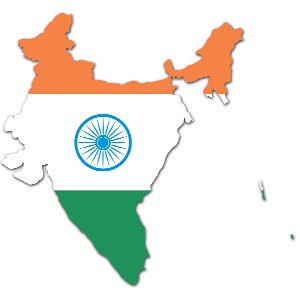
India " We're a group a students taking I&E, for the benefit of all students, this blog is created(:" the sites. Home Korea Australia Thailand Germany Japan Singapore May 2009 Video Playing ♥ Will Smith Sings Hindi |